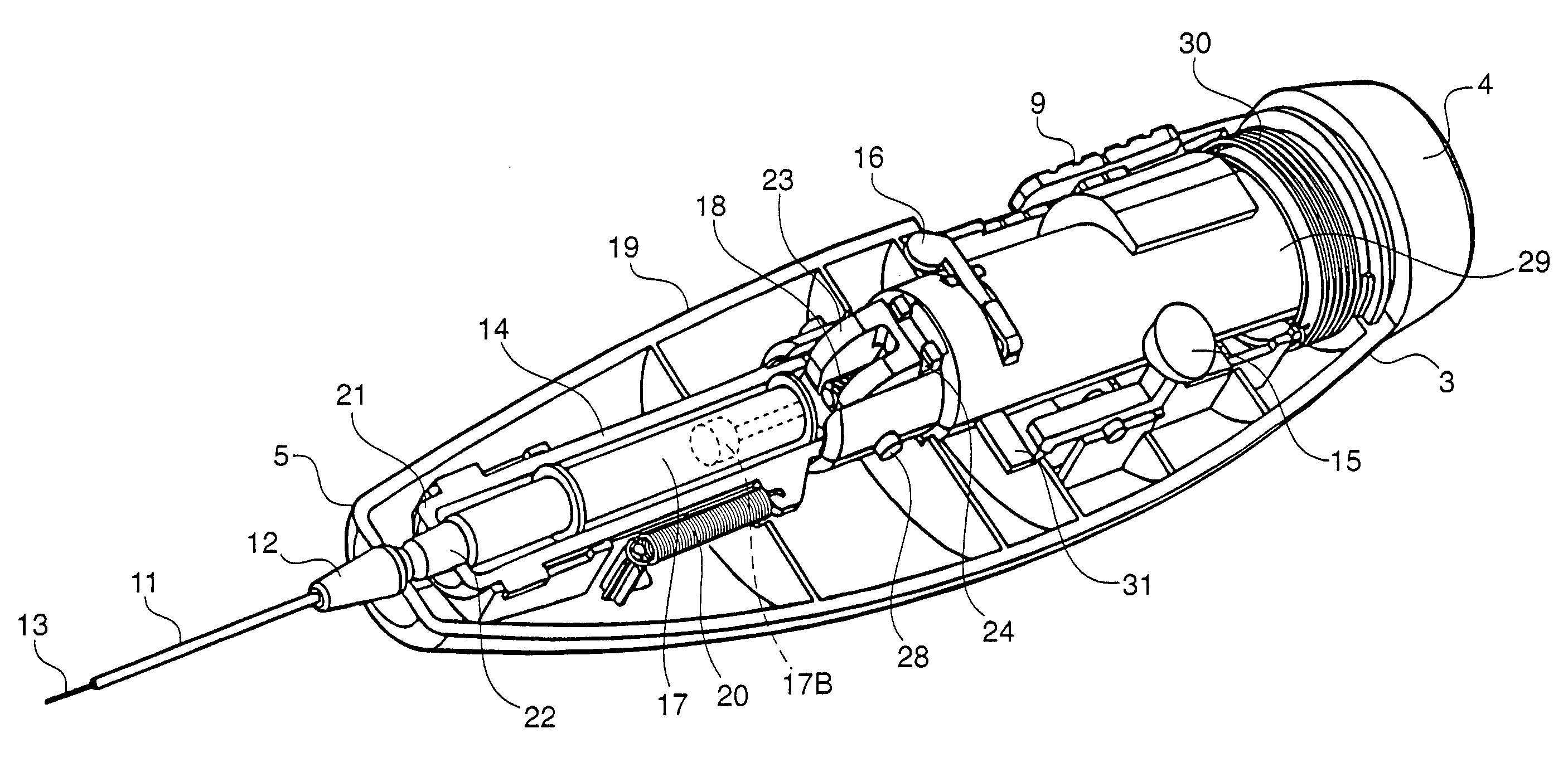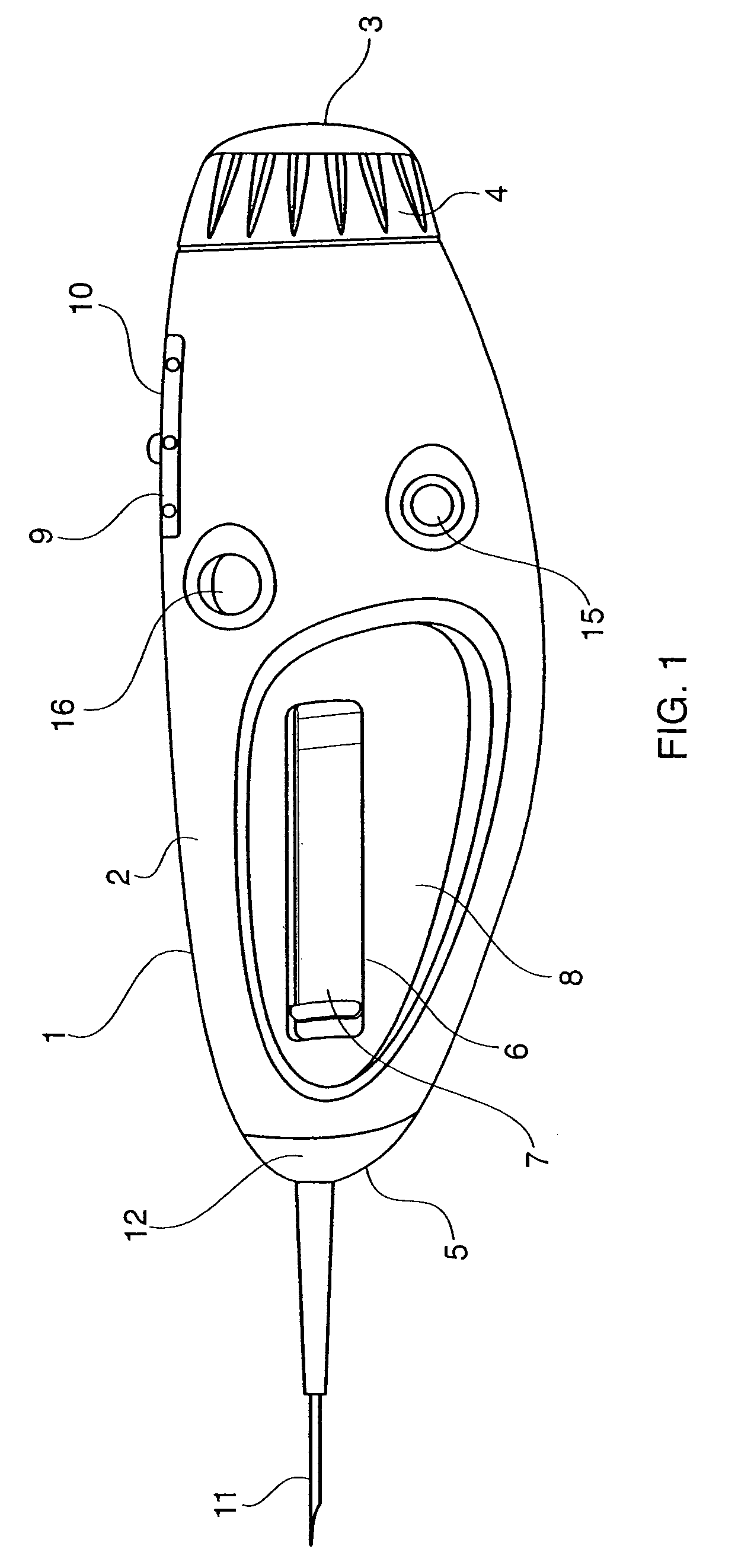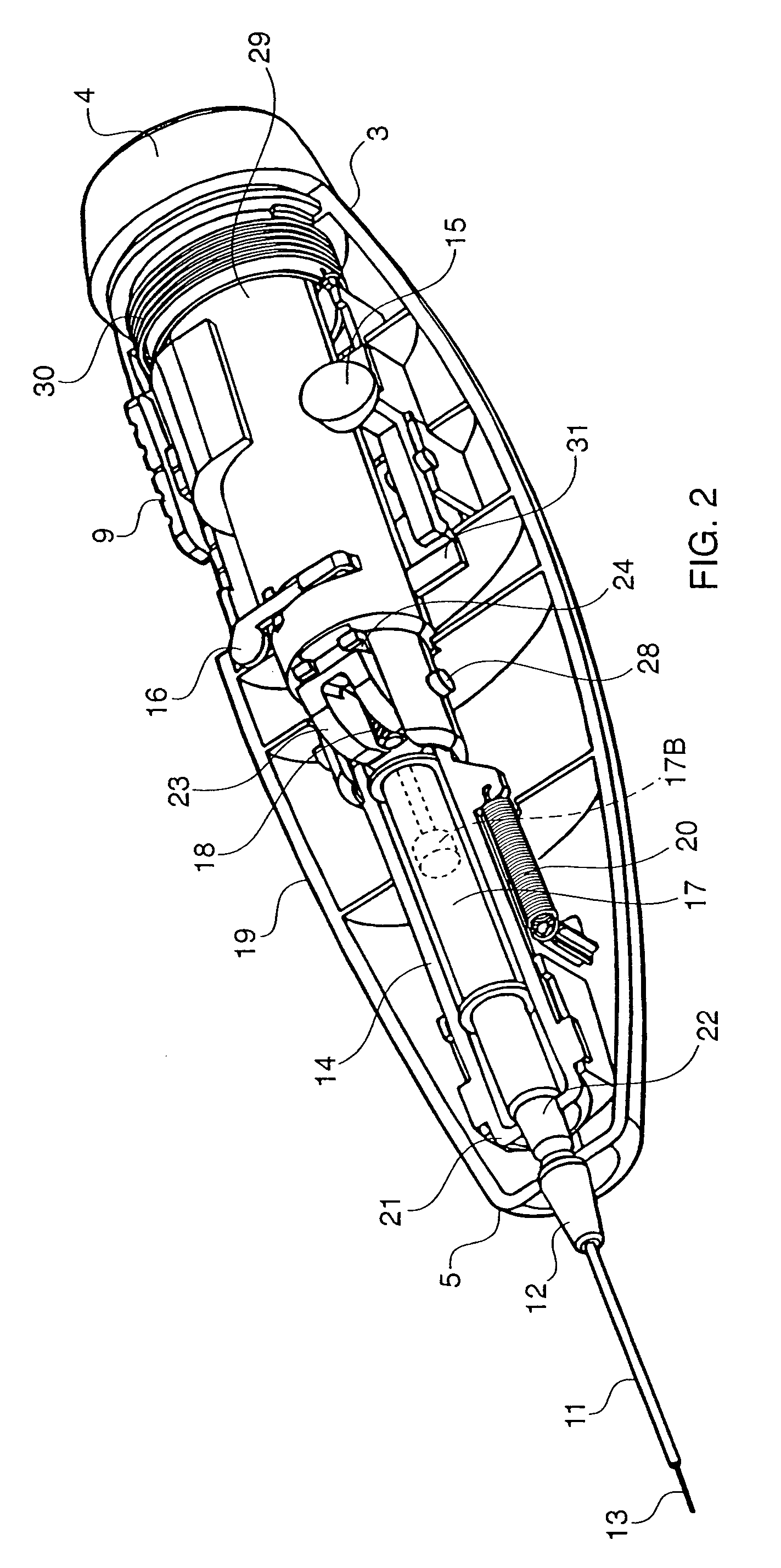Catheter device and method for delivering a dose internally during minimally-invasive surgery
a catheter device and minimally invasive surgery technology, applied in the direction of intravenous devices, medical syringes, infusion syringes, etc., can solve the problems of time-consuming manual work, time-consuming removal and replacement, and car
- Summary
- Abstract
- Description
- Claims
- Application Information
AI Technical Summary
Benefits of technology
Problems solved by technology
Method used
Image
Examples
first embodiment
[0018]FIG. 1 is a side view of a catheter handpiece 1 of a first embodiment of the present invention. The handpiece housing 2 in this embodiment may be made from any biocompatible and sufficiently rigid material including plastic and hard rubber. As shown in FIG. 1, catheter handpiece 1 has at its actuator end 3 an actuator knob 4 for cocking the catheter handpiece. Toward catheter handpiece lumen end 5, there is a dose carpule insertion aperture 6 with an aperture door 7. In this embodiment, there is also provided near dose carpule insertion aperture 6 a rubber grip surface 8 to enhance operator control of the handpiece. Toward actuator end 3 of the catheter handpiece there is a dose metering member 9 which is used to set the amount of dose desired to be injected into the patient when the catheter handpiece is activated. Next to dose metering member 9 is a replaceable dose metering label 10 to provide the operator with an indication of the amount of dose that will be injected at va...
second embodiment
[0037]The second embodiment of the present invention shares the majority of the principal features of the first embodiment, with differences in detail principally due to the second embodiment's dose delivery actuator being deployed manually by the operator, rather than, as in the first embodiment, by utilizing stored spring energy to deploy the dose delivery actuator.
[0038]FIG. 6 is an oblique view of a catheter handpiece in accordance with a second embodiment of the present invention, showing catheter handpiece 101, with a lumen end 102 and an actuator end 103. As in the first embodiment, handpiece housing 104 may be made from any bio-compatible and sufficiently rigid material including plastic and hard rubber. At its actuator end 103, catheter handpiece 101 has an actuator knob 105 for operating the dose delivery actuator mechanism within the catheter handpiece and thereby delivering the desired dose. Toward lumen end 102, there is a dose carpule insertion aperture 106 with an ape...
PUM
 Login to View More
Login to View More Abstract
Description
Claims
Application Information
 Login to View More
Login to View More - R&D
- Intellectual Property
- Life Sciences
- Materials
- Tech Scout
- Unparalleled Data Quality
- Higher Quality Content
- 60% Fewer Hallucinations
Browse by: Latest US Patents, China's latest patents, Technical Efficacy Thesaurus, Application Domain, Technology Topic, Popular Technical Reports.
© 2025 PatSnap. All rights reserved.Legal|Privacy policy|Modern Slavery Act Transparency Statement|Sitemap|About US| Contact US: help@patsnap.com



